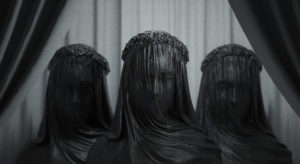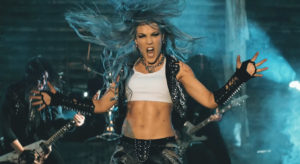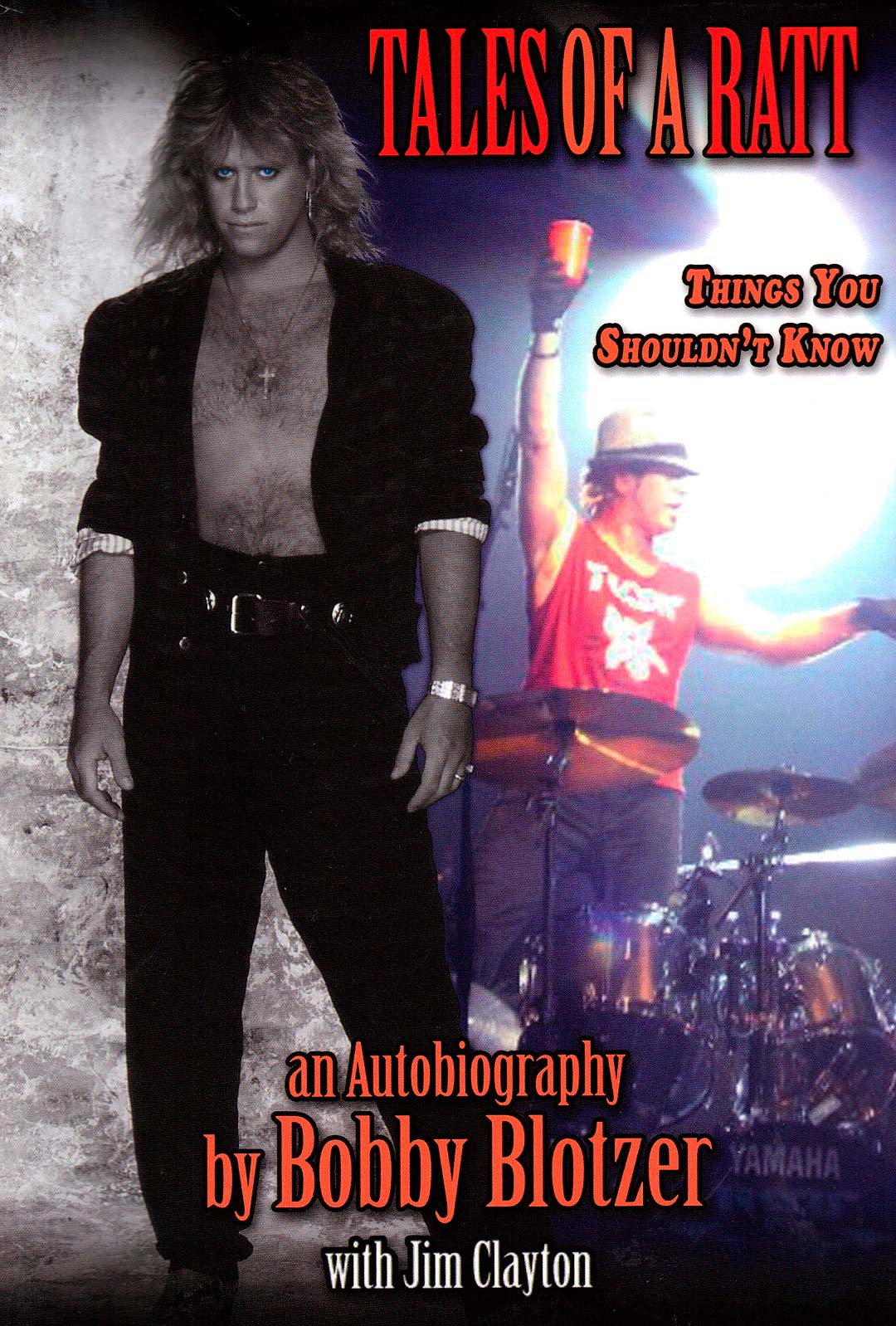“La entrada en la década de los 80 va a significar que vamos a tocar en escenarios ante miles de personas. Vamos a hacer montones de dinero, a conducir deportivos y a comprar piscinas a nuestras madres. Quiero a Mickey Ratt en la portada de cada revista de rock al lado de Ozzy y de Priest”, le aseguró Stephen Pearcy a su compañero en la banda la Nochevieja de 1979, después de que él y el guitarrista Robbin Crosby fueran roadies de Van Halen en su mayor concierto hasta la fecha y de que el resto de miembros les hubieran dejado.
La fama no vino fácil y tuvieron que recomerse mientras que a sus amigos de Mötley Crüe les sonreía a mediados de 1982, como Pearcy confiesa. Pero, ¿desanimarse? No, no era una palabra en el vocabulario del cantante, según apunta una colaboradora de la banda: “Stephen estaba muy centrado y tenía la determinación y la energía para triunfar”. Es más, concreta: “era tan carismático que podía conseguir que la gente hiciera cualquier cosa por él”.
Bienvenidos al Sunset Strip de principios de los 80, donde bandas como Stryper, Dante Fox y W.A.S.P. pelean por un poco de atención. Allí se centra la autobiografía del cantante de Ratt, una de las bandas de rock más famosas de esa década, que reinó en los estadios de 1983 a 1987, que aupó a Bon Jovi, a Poison y a Guns N’Roses, y que fiesteó con Billy Idol y Ozzy Osbourne.
Pero el camino hacia la cima es escarpado –aquí nos cuenta todos los locales donde tuvieron que tocar, las concesiones a la booker del Whisky A Go Go para poder tocar allí, el estrafalario management de la mujer de DIO, las novias suministradoras de comida, etc- y el descenso, no más sencillo. “Robbin tenía un gran apetito, hablaras de drogas, comida, mujeres o música”, concreta en la página 57. Y fue durante la grabación del cuarto disco, ‘Reach For The Sky‘ (1988) cuando comenzó a descontrolarse su uso de drogas y a resentirse su música. En el siguiente, ‘Detonator‘, empeora, y se lanza a su primera rehabilitación. “Robbin se caía a pedazos. Estaba frustrado y lloraba a menudo. Sus dedos estaban hinchados y se movía despacio, torpemente”, ilustra en la página 251. Los efectos no duran mucho y vuelve a las andadas: en Japón desentona y tiene que regresar, por lo sustituyen por Michael Schenker para las fechas restantes. Pearcy y el batería Bobby Blotzer sufren otro de sus encontronazos, en una banda de “mercenarios” como la llamaba ya el cantante, y Ratt se separa, sin acabar la gira.
‘Sex, Drugs, Ratt&Roll: My Life In Rock’ es una autobiografía tan salvaje como ‘The Dirt’ de Mötley Crüe, que arranca sonoras carcajadas, y en la que prevalecen el sexo y la lucha por el espectáculo y por aprovechar la oportunidad frente a las drogas.
En 1997 se reúnen para “reactivar el catálogo”, según sugiere Pearcy, y sacan nuevo disco, sin Crosby y sin el bajista Juan Croucier. En junio de 2002 Crosby muere de sobredosis, con HIV desde 1994, e incapaz de rehabilitarse. “Se había rodeado de perdedores. Nunca había cerrado las puertas de su casa y casi todos sus tesoros, sus guitarras y sus discos de oro habían sido robados. Su peso había bajado hasta proporciones épicas y su carrera musical estaba hundida por completo, pero las noticias me conmovieron. Había sido mi mejor amigo y mi colaborador musical más cercano. Y ahora se había ido para siempre”, expresa en la página 290. Se había ido para siempre, y siempre lo recordaría como la última vez en la que lo vió: le había pedido dinero y su adicción era tal que se pinchaba entre los dedos de los pies. Le duchó, le dejó ropa limpia, tocaron juntos y después se fue (página 303).
Pearcy confiesa que nunca le había interesado mucho la cocaína y que no entendía la pasión de Crosby por la heroína hasta que la probó en su casa. Comienza a fumarla regularmente después de una caída del escenario durante una gira con Ratt, en la que se resiente su tobillo. Los fantasmas de que pueda pasarse otro año en el hospital, inmovilizado, como cuando un coche le atropelló, cuando tenía 15 años, regresan con fuerza. “La heroína era mi problema y mi mayor consuelo. Mi todo”, resume en la página 294. Sin embargo, por la época le obsesiona ser un buen padre para su recién nacida hija.
Pero, ¿lamenta algo del pasado? ¿Lamenta las peleas con Blotzer, el autobús raquítico de la primera gira, las juergas de días con Mötley Crüe que acababan en estado de inconsciencia, su look inspirado en Adam&The Ants más Duran Duran, la sobredosis de groupies, destrozar los hoteles, su reportaje en Playgirl, o las demandas por paternidad, por ejemplo? “Los 80 fueron mi década pero renuncio a responsabilizarme de todo lo que sucedió”, se mofa en la página 14.
En resumen, ‘Sex, Drugs, Ratt&Roll: My Life In Rock‘ es una autobiografía tan salvaje como ‘The Dirt‘ de Mötley Crüe, que arranca sonoras carcajadas, y en la que prevalecen el sexo y la lucha por el espectáculo y por aprovechar la oportunidad frente a las drogas. “En 1978 escribía todo el tiempo, usando mi propia ansiedad y deseo por la fama y el reconocimiento como la mejor inspiración para escribir”, explica en la página 72. Y la banda acaba tocando 200 fechas al año en estadios de 15.000 personas.
ENGLISH VERSION
“The 80s means we are going top lay on stages in front of thousands of people. We’re going to make a ton of money, drive sports cars,and buy our mothers swimming pools. I want Mickey Ratt on the cover of every rock magazine, right next to Ozzy and Priest”, assured Stephen Pearcy to his mate in the band on the New Year’s Eve of 1979, after him and guitarist Robbin Crosby being roadies of Van Halen in their biggest concert until now and that the rest of the members had quited.
Fame didn’t come easily and they had to harbor resentment while it smiled to their friends in Mötley Crüe in the mid 1982, as Pearcy confeses. But, losing heart? No, that wasn’t a word in the vocabulary of the musician, as points out a collaborator of the band:“He was extremely driven and focused-always had that drive and energy for suceed”. Even more, settles on: “he was so charismatic, he could engage people into doing anything for him”.
Welcome to the Sunset Strip of the early 80s, where bands as Roxxy Gang (previous to Stryper), Dante Fox (previous to Quiet Riot) and W.A.S.P. struggle for a bit of attention. There’s where the autobiography of the singer of Ratt, one of the most famous rock bands of that decade, that ruled in the arenas in those times, that lifted up Bon Jovi, Poison and Guns N’Roses, and that partied with Billy Idol and Ozzy Osbourne.
But the road to the top it’s steep-here he tells us about all the venues they had to play, to the concessions to the booker of Whisky A Go Go to hit the stage there, the extravagant management of the wife of DIO, the girlfriends that brang them food, etc- and the descend wasn’t easier.”Robbin had an enormous appetite, whether you were talking drugs, food, women or music”, precises on page 57. And it was during the recording of their fourth album, ‘Reach For The Sky‘ (1988) when his drug use started to spin out of control and the quality of playing dropped. “Robbin was falling apart. He was frustrated and often sobbed. His fingers were swollen and he moved slowly, clumsily”, describes on page 251. The results don’t last long: in Japan he’s out of tune and he has to go back to rehab, so for the remaining tour he must be replaced by Michael Schenker. Pearcy and drummer Bobby Blotzer fight again, in a band of mercenaries, as the singer already called it and Ratt says bye without ending the tour.
‘Sex, Drugs, Ratt&Roll: My Life In Rock’ it’s an autobiography so wild as ‘The Dirt’ by Mötley Crüe, that make you laugh out loud, and in which prevail sex and the struggle for spectacle and for seizing every opportunity over the stories of drugs.
In 1997 they come back to “reactivate the catalogue”, as Pearcy puts it, and they released a new record, without Crosby and without the bassist Juan Croucier. In June 2002 Crosby died due to a overdose; he was HIV since 1994 and had developed AIDS and was unable to rehabilitate. “Losers had surrounded him.He’d never lock the door to his place, and nearly all of his treasured gods, his gold records and his guitars, had been looted.His weight had ballooned to epic proportions, and his music career had already petered out. But the news still shocked me. He had been my best friend and my closest musical collaborator. Now he was gone forever”, expreses on page 290. He had gone forever and he would always remember the last time they met: he wanted money and his addiction was such that he could only shoot up between his toes. He had a shower, they played some music he had written, had dinner, introduced him to his kid and then he had to go (page 303).
Pearcy confesses he had never been crazy about cocaine and he didn’t understand the fush of Crosby about heroin until he tasted it in his house. He started to smoke it regularly after he fell off the stage while touring with Ratt and his ankle troubled him. The ghosts of his past start to haunted him: he doesn’t want to spent another year in the hospital, as he was when 15. “Heroin was my problem. And yet it was also my biggest confort. (…) It was my everything”, sums up in page 294. However, by the time he’s also obsessed by being a good father for his new born daughter.
But, does he regret anything in his past? Does he regret the fights with Blotzer, the tiny bus of the first tour, the binges of days with Motley Crue in which they lost conscience, their look inspired by Adam&The Ants meets Duran Duran, the overdose of groupies, thrashing out hotels, his report on Playgirl, or the paternity threats, to mention a few? “The 80’s was my decade, but I refuse to take responsability of everything that went on”, he mocks on page 14.
To cut a long story short, ‘Sex, Drugs, Ratt&Roll: My Life In Rock’ it’s an autobiography so wild as ‘The Dirt‘ by Mötley Crüe, that make you laugh out loud, and in which prevail sex and the struggle for spectacle and for seizing every opportunity over the stories of drugs. “(In 1978) I wrote constantly, using my own anxiety and desire for fame and recognition as the best kind of songwriting inspiration”, explains on page 72. And the band ends playing 200 dates a year in arenas of 15.000 seats and selling 30 million records.






